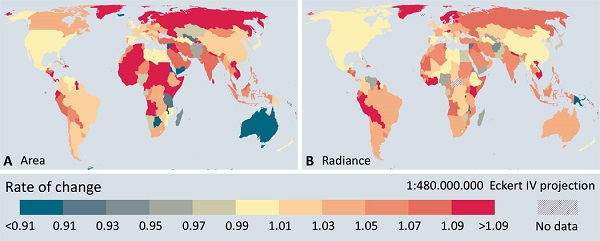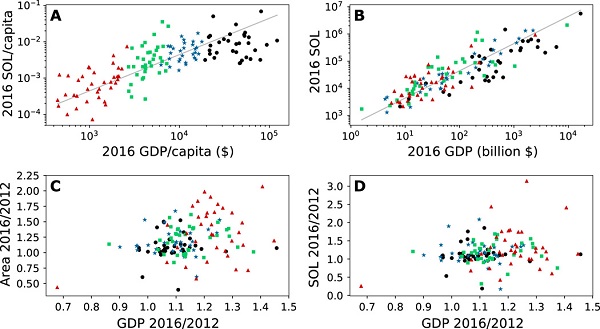A recent study led by Christopher Kyba from the GFZ German Research Centre shows artificially lit outdoor surfaces grew at an annual rate of 2.2% between 2012 and 2016. The fact that the world is transitioning to LED lighting so as to run away from pollution caused by traditional lighting is raising another type of environmental concern— light pollution.
 |
|
(Source: Science Advances) |
Published in the journal Science Advances, the findings suggest places including South America, Africa, and Asia are seeing more LED lighting. Kyba stated more places around the world used to experience natural day-night cycles are now lit by LEDs.
The Netherlands, Spain, and the US make up the world’s brightest areas, while war-torn places such as the Middle East witness decline in the adoption of artificial lighting.
 |
|
(Source: Science Advances) |
Researchers pointed out that artificial lighting around the world will continue to increase and become an environmental pollutant that is harmful to nocturnal animals, plants, microorganisms, and human beings.
 |
|
(Source: Science Advances) |
 |
 |
|
(Source: Science Advances) |
To read the full report, click here.
















